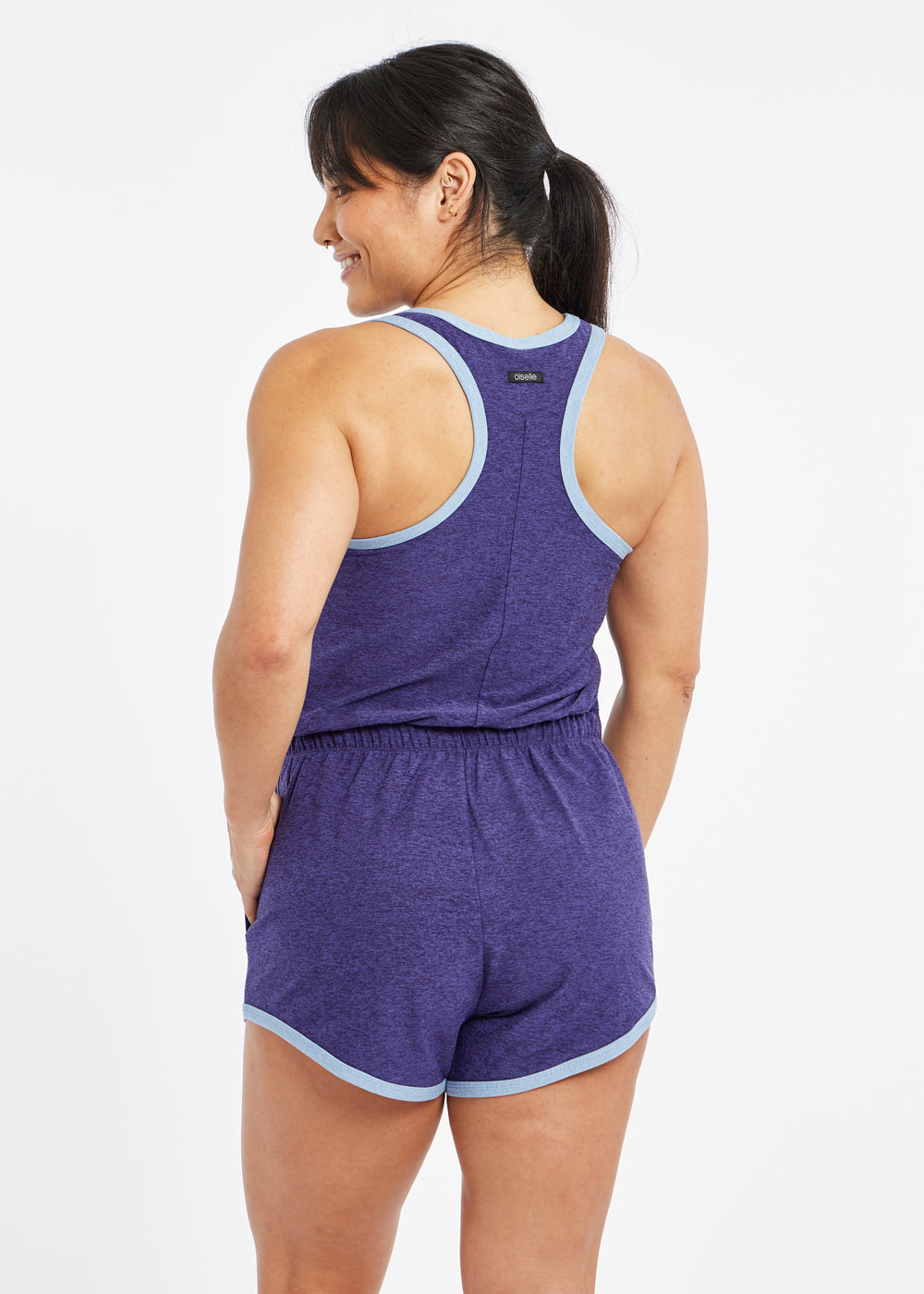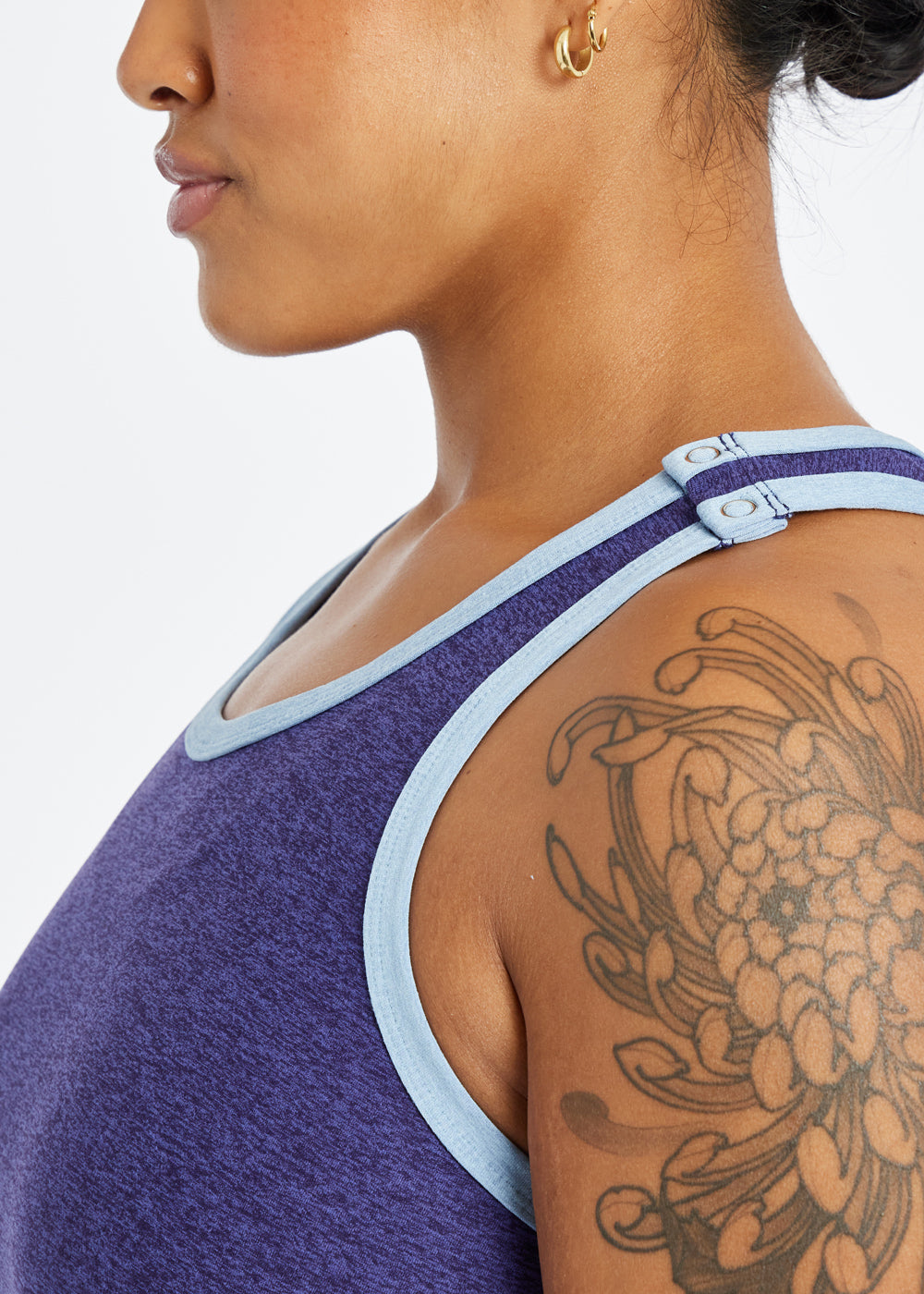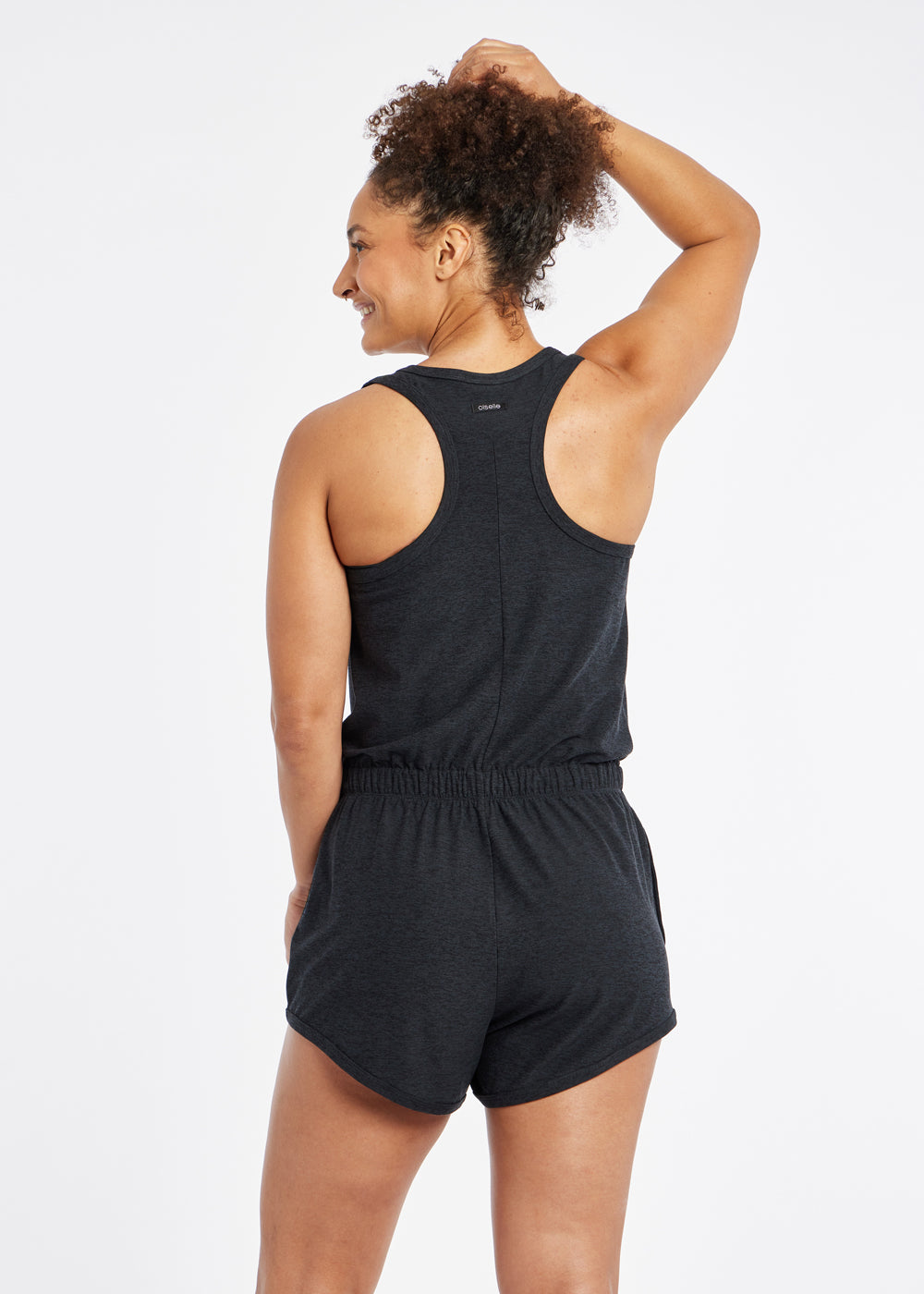Paralympian Jenna Fesemyer, a member of Oiselle's Haute Volée, dreams of becoming a professor to educate young adults about the intersections of disability, sport, and society. She is currently a PhD student at the University of Illinois, and has a wealth of knowledge to share with the Oiselle community. In 2021, Fesemyer represented the United States of America at the Tokyo 2020 Paralympic Games - competing in the 1500m, 5000m, and marathon. Read on to learn more about selection for Team USA, how Jenna found wheelchair racing, and what's next for this rockstar athlete.
The Paralympics
What does the word Paralympics mean?
A common misconception is that the word paralympics is a combination of paraplegic + olympics. This leads us to think that the paralympics are for those only who have sustained spinal cord injuries, which isn’t true. The word Paralympics actually means, para(llel) + (o)lympics. It is interpreted as parallel because the intent of the paralympics is to compete alongside the olympics, showing equity and as a celebration of what our bodies CAN do. The Paralympics are truly “parallel” in every sense of the term. Created for athletes of six categories (amputee, cerebral palsy, intellectual disability, visually impaired, spinal injuries and others), the Paralympics are held in the same four-year cycle as the Olympics, but hosted one month after the Olympics. The venues (such as the athlete village and sport facilities) are also the same as the Olympics, as well as the sponsors. Another common misconception is that the Paralympics are the same as the Special Olympics. It’s important to note that the Paralympics and Special Olympics are vastly different in nature, as they operate under completely different organizational structures, philosophies, and disability categories.
When and how did the Paralympics start?
In comparison to Olympic sport, the Paralympic movement and history is relatively new. In 1948, Sir Ludwig Guttmann hosted the first Stoke Mandeville Games for veterans with spinal cord injuries. At this time in history, many World War II vets were coming back from war and were able to survive the injuries that they sustained due to the invention of penicillin, which was discovered in the late 1920s and was used more broadly in the early 1940s. As the number of surviving veterans started to increase, there was an increase in demand from veterans looking for a competitive outlet as they re-entered society. The Stoke Mandeville Games primarily hosted wheelchair events, and later on, other disability groups started to establish their own sports organizations and competitions. From this sparked the Paralympic Games, which then aligned with the Olympic Games starting in the Seoul Summer Games (1988). In 2001, the International Olympic Committee then signed an agreement to protect the organization of the Paralympic Games. More recently, what was known as the USOC has now been renamed and re-branded as the USOPC, to continue equitable movements for the Paralympic Games in the USA.
The Agitos vs Olympic Rings:
In comparison to the Olympic Rings, the Paralympics use the Agitos as the icon, flag, and symbols used to represent the Paralympic Games. The Agitos signify the four core values of the Paralympics: courage, determination, inspiration and equality. The Agitos are represented through red, blue and green colors, as they are the colors most used in flags around the world. The word ‘agitos’ itself means ‘I move’ in Latin, symbolizing movement itself and also the role of the Paralympics in bringing athletes together from all over the world to compete. It also incorporates the idea of spirit in motion, which is part of the Paralympic motto:
“The spirit of every Paralympic athlete is uncompromising - every day exceeding what others had thought was possible by pushing themselves to the limit. With the motto ‘Spirit in Motion,’ the IPC has captured what the Paralympic Movement is trying to achieve: enabling athletes from all backgrounds to unite on a single stage, inspiring and exciting the world with their performances.” - The Paralympic Motto, International Paralympic Committee
Who can compete at the Paralympics?
Athletes are eligible to compete if they have a physical, visual, or intellectual impairment. For athletics, these categories are further broken down into classifications, which vary from sport to sport (using a numbers system). Having a classification system is crucial for protecting integrity in sport. For athletics, an athlete receives their classification status by attending a qualifying track meet (check out the USPT&F website for more info) and going through an official evaluation of their functionality and through reviewing the athlete’s medical diagnostics forms. Classifications change based on sport. You can see an overview of the classification system for athletics here.
Selection Criteria for the 2024 Paris Games for Para Track and Field:
Games selection for the 2024 Paris Paralympic Games will take place at U.S. Paralympic Trials in Chula Vista, CA on July 18-21, 2024. The U.S. can potentially be allotted a maximum of 80 slots for Athletics by the International Paralympic Committee (45 male slots and 35 female slots). From the performances at Paralympic Trials, a ranking list will then be composed of each athlete’s best event. Slots will be filled for the Paralympic Team by the discretion of the ranking list itself -- from highest percentage to lowest -- until all slots are occupied.
Wheelchair Racing
Wheelchair Racing:
Leading into the 1940s, the development and distribution of antibiotics (penicillin) allowed veterans to survive spinal cord injuries that they sustained in World War II. The U.S. Government then noticed the increase in demand for mobility aids and started to distribute E&J Wheelchairs to those who needed them. This started to open up the idea of rehabilitative therapy, and from this, the sport of wheelchair racing was born. Athletes then modified the wheelchairs they were using to make them faster, which ultimately revolutionized into the three-wheeled, long frame that we use today.
The patent of the first-ever “light” wheelchair, weighing in at 35lbs (Everest & Jennings, 1936). Note: manual wheelchairs today weigh around 15lbs.
How did you find wheelchair racing?
I found wheelchair racing in 2013 when the Ohio High School Athletic Association added wheelchair events to the high school state track meet (100m, 400m, 800m). Before then, I had never heard of wheelchair racing or adaptive sports! After learning more about the sport, I thought I’d give it a try. “Giving it a try” ultimately led me to the University of Illinois at Urbana-Champaign, which is known as the official Paralympic Training Site for wheelchair racing, to continue wheelchair racing at a collegiate level. I still train at the University of Illinois and am now a Ph.D. student in the Recreation, Sport, and Tourism department. For anyone who is interested in trying adaptive sports but doesn't know where to start, Move United and the Challenged Athletes Foundation are great resources that provide community education, camps and clinics, and more. One of the largest barriers to participation in adaptive sports is the cost of adaptive equipment (the starting cost of a racing wheelchair is around $5,000). Move United and the Challenged Athletes Foundation offer grants to qualifying individuals to close the participation gap and to help individuals with disabilities become more physically active!
What does your training look like as a wheelchair racer?
With the Berlin, Chicago, and New York City Marathons coming up this fall, we’ve started tacking on some higher volume sessions. As a part of the Illinois Wheelchair Athletics program here in Champaign, Illinois, we clock in about 100 miles a week (check out my Strava for more details!). Those sessions span from short, explosive hill climbs to 20-22 mile Saturday sessions. We have many preparation strategies depending on what our workouts entail. When we train on the road, we fold up a spare tire and carry a CO2 cartridge in case we get a flat tire. For longer road sessions, we will carry a camelbak to fuel. We prefer a camelbak (carrying fuel such as sports drink from Skratch Labs) because unlike runners, we don’t have our hands available to use gels. Fun fact: some wheelchair athletes will consume energy gummies during long sessions by putting a dab of super glue on it and adhering it to the steering of the racing wheelchair! For our afternoon strength workouts in the gym, we prioritize preventative maintenance exercises for our arms and shoulders. Because the biomechanics of wheelchair racing is very economical in nature, wheelchair athletes are able to train (and compete) at a higher capacity than runners. This is why we are able to sustain a large volume schedule without injury.
Maintenance:
In order to train hard, it’s crucial to keep up with ongoing maintenance for our racing wheelchairs. This includes changing our tires, changing out our glove rubber and hand ring rubber, and making sure all of the different parts on our racing wheelchairs are tight and aligned. While it is an athlete's responsibility to maintain their own equipment (just as a runner is responsible for their own training efforts and recovery), I feel very honored to train with 20 teammates at the University of Illinois that offer their help and wisdom for best maintenance strategies and practices! When an athlete gets a new racing wheelchair, it can take up to 6 months to get re-acclimated to new equipment. There is no shortcut or secret to cut down the adjustment period - putting in the miles on the track and road is key!
The smaller ring next to my hand in the photo is called a “hand ring” – it’s coated in rubber to create friction with my rubber-coated gloves upon contact. This is how wheelchair athletes propel forward!
What’s next?
I’m excited to be completing my Abbott World Marathon Majors 6th star this fall at the Berlin Marathon! Along with Berlin, I will be racing the Chicago and NYC Marathons. I’m eager to get in a good foundation of training this winter as I attempt to make my second Paralympic team next year. Furthermore, the New York City Marathon will serve as the U.S. Paralympic Marathon Selection Event on November 5, 2023. This will be the first opportunity for athletes to punch their ticket to the Paris 2024 Paralympic Marathon, as the top two American athletes for both men and women will automatically qualify. I’m looking forward to lining up with some of the world’s best athletes this fall and to test my fitness!
If you want to read more from Jenna, check out her recent blog about her struggle with RED-S and OTS, or follow her on Instagram.































































































































































































